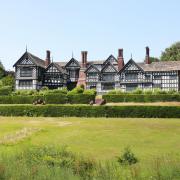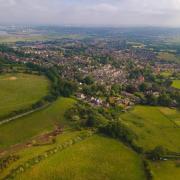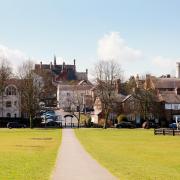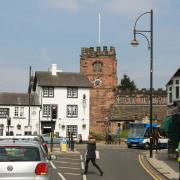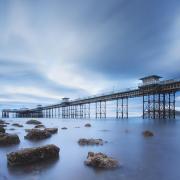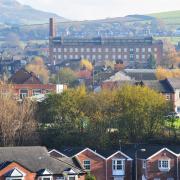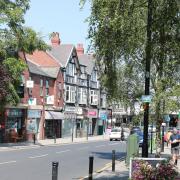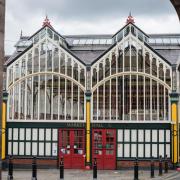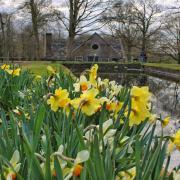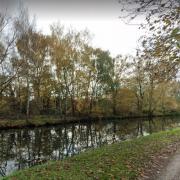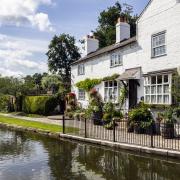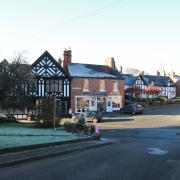St Asaph is Britain's newest city. It may be small but it thinks big WORDS BY MARTIN PILKINGTON
To mark the Queen’s Diamond Jubilee Wales has a new city: the tiny St Asaph, population about 3,500. Its citizens are convinced, however, that the settlement between Rhyl and Denbigh has been a city – and a fine one – for centuries.
‘Travellers in the 18th century writing about North Wales all referred to St Asaph as a city, and this continued into the 19th century, so naturally we thought we were a city,’ says Andrew Thomas, mayor when the application was made and granted. ‘It was in the 1970s that we had a rude awakening, learning that although we had the cathedral we were never recognized by the monarch or parliament as a civic city.’
If not a civic city it has been a cathedral city since the 6th century, however.
The town council tried to correct this administrative wrong at the millennium and the Queen’s Golden Jubilee, before finally succeeding in this her Diamond Jubilee year. Their case had significant local support:
‘We were fortunate enough that the Bishop, the Rev. Gregory Cameron, the Lord Lieutenant of Clwyd Trefor Jones and the head of Denbighshire County Council Bill Cowie were all kind enough to present it on behalf of St Asaph,’ says Mr Thomas.
‘One of the benefits of the award is that more people know where St Asaph is now. The tourist industry is reporting there has been a rise in visits, especially to the cathedral as people are curious to see this place that has been made a city,’ he enthuses.
Chair of the local tourist association, Christine Simpson, lists the city’s attractions, which include the lovely 13th century cathedral, said to be Britain’s smallest, and the former workhouse where Henry Morton Stanley (he of the ‘Doctor Livingston I presume’ conversa tional gambit) lived from the age of five to 15. It may not boast Harrods, but says Christine:
‘There’s the Tweedmill retail complex, plus we have very good independent retail outlets – like the fishing tackle shop, Foxons, which people visit from miles around.’
One hotly debated feature is the shiny modern ‘totem pole’ commemorating the aforementioned Stanley, seen by some as a supporter of slavery - he fought for the Confederacy in the American Civil War, but then he also fought for the Union side before deserting. His record in the Congo was shameful too.
She then cites the common, where the rare Black Poplar thrives; the fine stretches of the River Elwy loved by fly-fishermen, the beautiful surrounding countryside, and even the excellent bowling green. This then is not New York City, nor London, and that of course is its charm. St Asaph is a city that can be walked through in a few minutes, taking in the lovely old bridge and the steeply sloping main street, and with luck the cattle and sheep market.
St Asaph may be small, but it has great cultural significance for Wales, one of its bishops a hero of Welsh national identity. ‘The cathedral has the historic Welsh translation of the Bible, published by Bishop Morgan in 1588.
It really was one of the cornerstones in preserving the Welsh language, providing something that all could read, and to refer back to for scholarly Welsh language study,’ says Mr Thomas. ‘One of the originals is in the cathedral, and was I believe used at Prince Charles’s investiture as Prince of Wales,” he continues.
Contemporary culture is thriving too in the form of the North Wales International Music Festival, this year held from September 22nd to 29th and expected to attract 10,000 visitors. ‘We are thinking about how we can tie in the city status award to the festival to make it a double celebration,’ says Andrew.
The festival’s artistic director, Ann Atkinson, confirms those intentions: ‘We are linking to the City Status award, and to the Queen’s Jubilee, and it is also the 40th anniversary of the festival itself.
‘The King’s Singers are on the Monday night, doing a programme dedicated to the Queen’s Jubilee - which has seen St Asaph win city status - with music with royal associations from Henry VIII onwards.’
Royal connections are woven through the programme: ‘Karl Jenkins is writing a new piece which will be played by Hannah Stone, harpist to the Prince of Wales,’ she tells me. ‘And Paul Mealor who wrote Ubi Caritas for last year’s royal wedding will be appearing with a choir from Aberdeen University where he teaches.’
Ann says the cathedral, main venue for the concerts, enjoys excellent acoustics - far better than Sydney Opera House where the multi-tasking mezzo-soprano, conductor, choirmaster and festival director has also performed.
Other stars it will welcome include cellist Julian Lloyd Webber, French pianist Pascal Rog�, and the renowned Chilingirian Quartet.
The last night features the BBC National Orchestra of Wales; fittingly one of the pieces they are playing is by festival founder William Mathias who is buried outside the cathedral.
A very fine and starry line-up. But then this is - now beyond dispute - a very fine city.
The print version of this article appeared in the July 2012 issue of Cheshire Life
We can deliver a copy direct to your door – order online here



